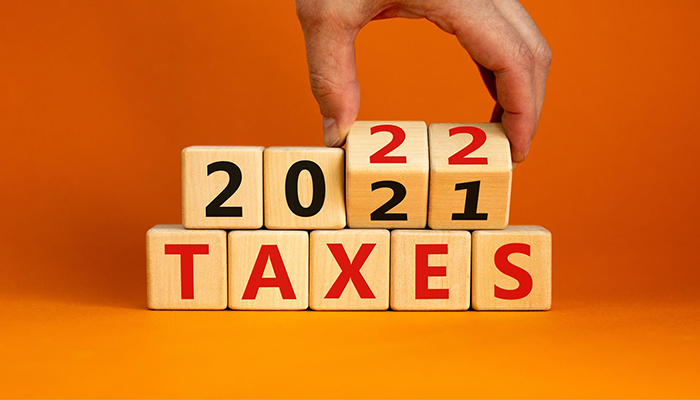
Table of Contents
Most taxpayers across the United States were taken by surprise when in November 2021, the Internal Revenue Service (IRS) published annual inflation adjustments for the tax year 2022. The update covered more than 60 tax provisions, including tax rate schedules and other tax modifications. It is important for taxpayers to stay updated with changes to the tax code to remain compliant. These changes will be applicable when filing tax returns for 2022 in 2023. So, this year, there’s no need to be anxious if you have any unfiled tax returns. Let’s take a closer look at the tax inflation adjustments for the year 2022.
Highlights of Revenue Procedure for the tax year 2022 and beyond
The following dollar amounts are the most important tax items for the tax year 2022 for most taxpayers:
Marginal Rates
Individual single taxpayers with incomes of more than $539,900 ($647,850 for married couples filing jointly) will continue to pay a 37 percent top tax rate in 2022.
The other rates are:
- 35 percent for incomes over $215,950 ($431,900 for couples filing jointly)
- 32 percent for incomes over $170,050 ($340,100 for couples filing jointly)
- 32 percent for incomes over $170,050 ($340,100 for couples filing jointly)
- 24 percent for incomes over $89,075 ($178,150 for couples filing jointly)
- 22 percent for incomes over $41,775 ($83,550 for couples filing jointly)
- 12 percent for incomes over $10,275 ($20,550 for couples filing jointly)
- 10 percent for taxpayers with incomes of $10,275 or less ($20,550 for couples filing jointly)
Related Blog Post: Understanding IRS’ First-Time Penalty Abatement Policy
Standard deduction for married couples
For the tax year 2022, the standard deduction for married couples filing jointly climbs to $25,900, up $800 from the previous year. The standard deduction for single taxpayers and married persons filing separately will increase by $400 to $12,950 in 2022, and the standard deduction for heads of households will increase by $600 to $19,400 in 2022.
Personal exemption
The personal exemption for the tax year 2022 remains at 0, as it was for 2021, this elimination of the personal exemption was a provision in the Tax Cuts and Jobs Act.
Itemized deductions
For 2022, as in 2021, 2020, 2019, and 2018, there is no cap, as the limitation was repealed by the Tax Cuts and Jobs Act.
Alternative Minimum Tax exemption
For the tax year 2022, the Alternative Minimum Tax exemption is $75,900, phasing out at $539,900 (For married couples filing jointly the amount will be $118,100, with the exemption phasing out at $1,079,800). The exemption amount for 2021 was $73,600, with a phase-out starting at $523,600 ($114,600 for married couples filing jointly, phasing-out from $1,047,200).
Earned Income Tax Credit
The maximum Earned Income Tax Credit amount for qualifying taxpayers with three or more qualifying children is $6,935, up from $6,728 in the 2021 tax year.
Transportation fringe benefit and parking
The monthly limit for the qualifying transportation fringe benefit, as well as the monthly limit for qualified parking, will both increase to $280.
Related Blog Post: Is Your Financial Hardship Preventing You from Paying Off Your Tax Dues? Read This!
Employee salary reductions for contributions to health flexible spending arrangements
The cash ceiling for employee salary reductions for contributions to health flexible spending arrangements increases to $2,850. The maximum carryover amount for cafeteria plans that allow unused amounts to be carried over is $570, up $20 in 2021.
Medical Savings Account coverage
Taxpayers with self-only coverage in a Medical Savings Account must have an annual deductible of no less than $2,450, up $50 from 2021, and no more than $3,700, up $100. The highest out-of-pocket cost for self-only coverage is $4,950, up $150. The annual deductible for family coverage must not be less than $4,950, up from $4,800; nonetheless, it cannot be greater than $7,400, up $250 from the limit in 2021. The out-of-pocket expense maximum for family coverage is $9,050, up $300.
Lifetime Learning Credit
For taxable years beginning after December 31, 2020, the modified adjusted gross income amount used by joint filers to figure out the reduction in the Lifetime Learning Credit given in 25A(d)(2) is not adjusted for inflation. For taxpayers with a modified adjusted gross income of more than $80,000 ($160,000 for joint returns), the Lifetime Learning Credit is phased out.
Foreign earned income
The foreign earned income exclusion is $112,000, up from $108,700 for tax year 2021.
Estate of decedents
The basic exclusion threshold for estates of decedents who died in 2022 is $12,060,000, up from $11,700,000 for estates of decedents who died in 2021.
Exclusion for gifts
The yearly exclusion for gifts rises to $16,000, up from $15,000 in the 2021 calendar year.
Maximum credit allowance for adoptions
The amount of qualifying adoption expenses up to $14,890 is the maximum credit permitted for the tax year 2022, up from $14,440 in 2021.
Conclusion
Now that you know the changes that shall impact your 2022 unfiled tax returns, you may need to talk to an IRS attorney in Dallas to get help staying compliant with the new requirements. Register with us for a free tax attorney consultation regarding unfiled tax return help and a range of other IRS tax problem solutions. The Law Offices of Nick Nemeth has a team of skilled and experienced IRS attorneys that have been serving the Dallas community for decades. To get answers to all your questions about tax inflation adjustments for 2022 and other tax issues, call (972) 426-2553 or fill out our contact form.


